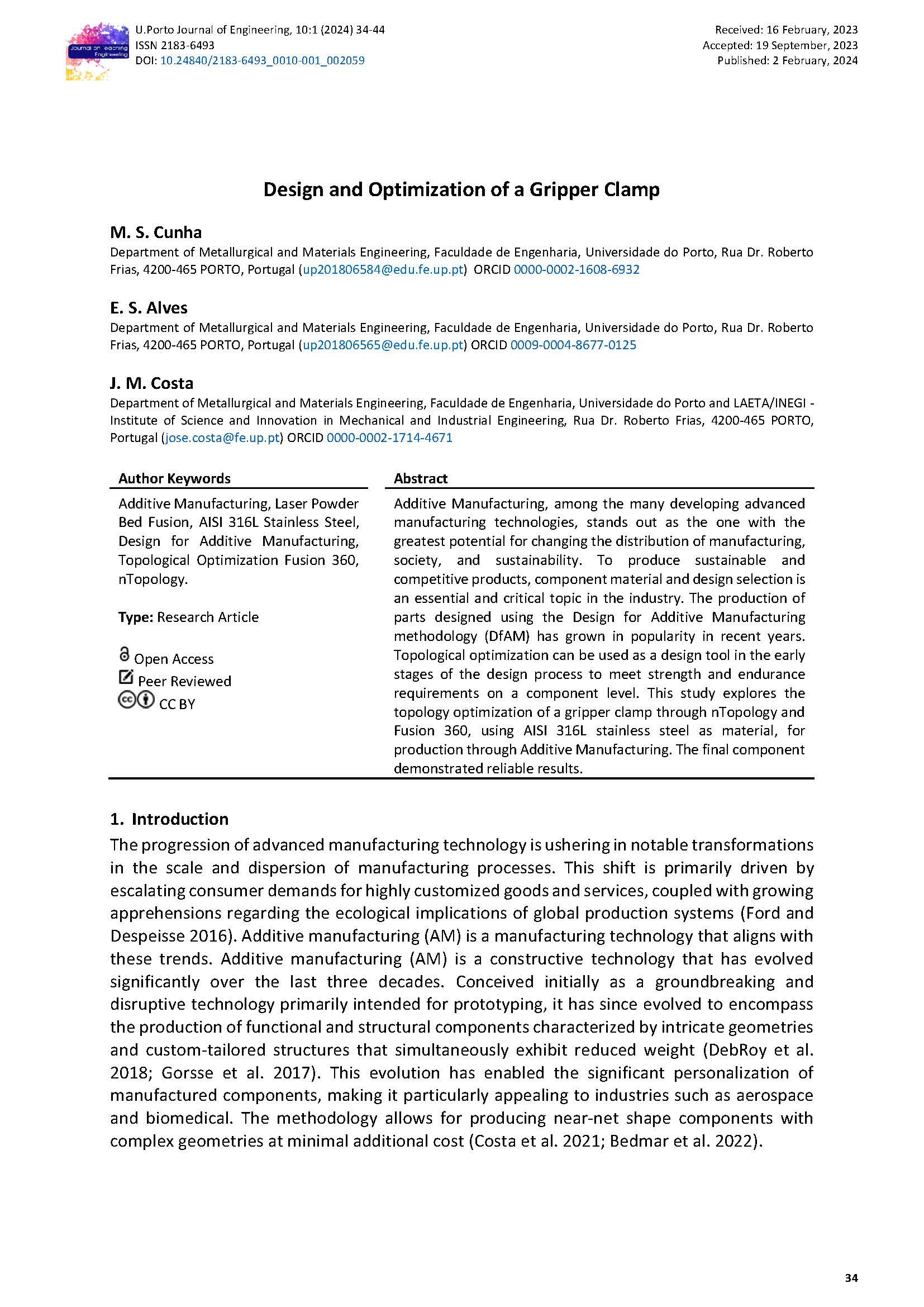Design and Optimization of a Gripper Clamp
Main Article Content
Abstract
Additive Manufacturing, among the many developing advanced manufacturing technologies, stands out as the one with the greatest potential for changing the distribution of manufacturing, society, and sustainability. To produce sustainable and competitive products, component material and design selection is an essential and critical topic in the industry. The production of parts designed using the Design for Additive Manufacturing methodology (DfAM) has grown in popularity in recent years. Topological optimization can be used as a design tool in the early stages of the design process to meet strength and endurance requirements on a component level. This study explores the topology optimization of a gripper clamp through nTopology and Fusion 360, using AISI 316L stainless steel as material, for possible production through Additive Manufacturing. The final component demonstrated reliable results.
Downloads
Article Details

This work is licensed under a Creative Commons Attribution 4.0 International License.
Authors who publish with this journal agree to the following terms:
- Authors retain copyright and grant the journal right of first publication with the work simultaneously licensed under a Creative Commons Attribution License that allows others to share the work with an acknowledgement of the work's authorship and initial publication in this journal.
- Authors grant the journal the rights to provide the article in all forms and media so the article can be used on the latest technology even after publication and ensure its long-term preservation.
- Authors are able to enter into separate, additional contractual arrangements for the non-exclusive distribution of the journal's published version of the work (e.g., post it to an institutional repository or publish it in a book), with an acknowledgement of its initial publication in this journal.
- Authors are permitted and encouraged to post their work online (e.g., in institutional repositories or on their website) prior to and during the submission process, as it can lead to productive exchanges, as well as earlier and greater citation of published work (See The Effect of Open Access).

